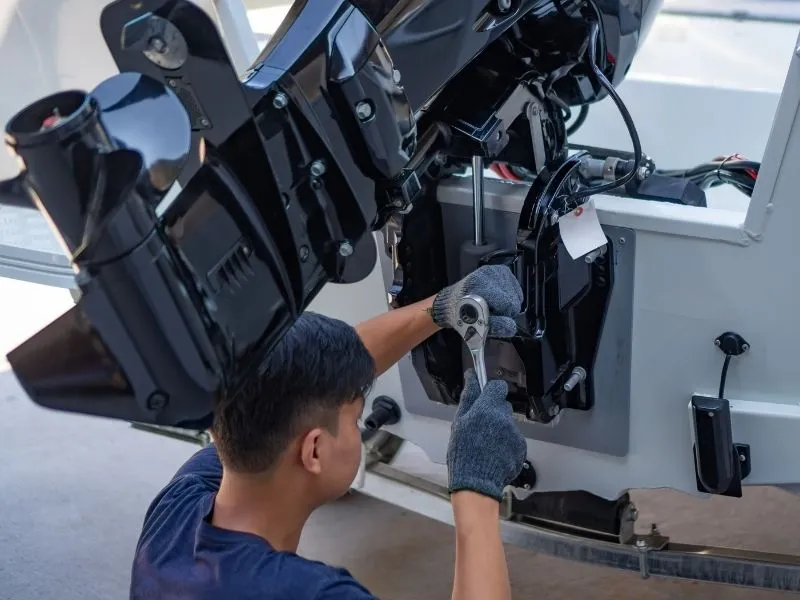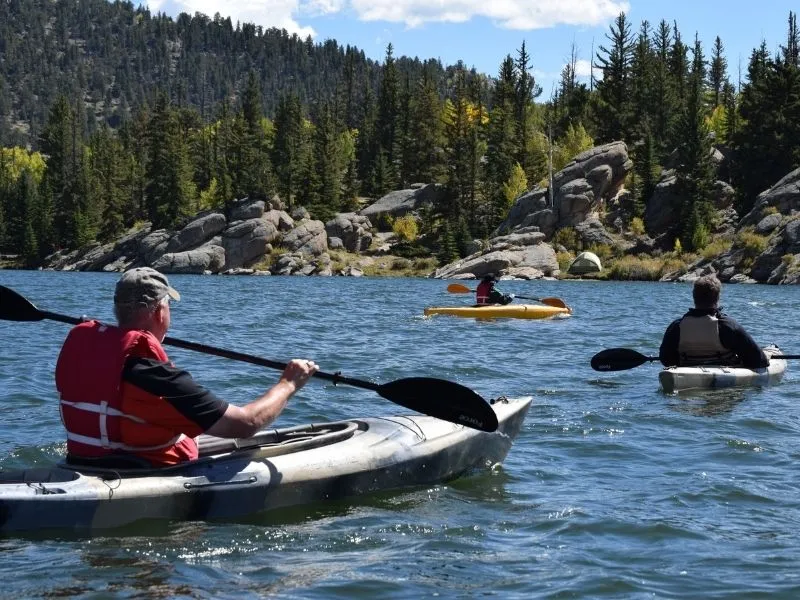Few people are aware that boats do not have the same gears as vehicles. But why don’t boats have gearboxes like cars and trucks? Wouldn’t that allow them to go faster? Well, you’ve come to the correct spot to find out all the information.
Transmissions are not used in boat engines since they add unnecessary complexity for a small increase in performance. The propeller usually does not revolve at the same speed as the engine; if it does, it cavitates and shortens its life expectancy. Adding gears raises the speed, which raises the turbulence, hence no gears.
So, the answer to the question, Do boat motors have transmissions is already evident. Yet, we would discuss further to have more in depth knowledge. The more you know your boat, the more control you have over her.
How Do Boat Engines Function?
To understand how does an inboard boat transmission work, we must understand how boat engines work. But first, let’s answer another question – do boat engines have transmissions? No, they don’t. Now, let’s proceed.
First of all and primarily, a boat’s mobility is entirely dependent on its propeller. And the propellers begin to shake once they exceed a certain set speed. If you’re using a higher gear to increase speed, it means you can’t utilize the same propeller in the movement. The propeller blades serve as the transmission, supplying the boat with the necessary thrust to go ahead at full speed.
Automobiles often function in highly changing environments, this means accelerations and decelerations, traffic lights, speed restrictions, crossings, and a variety of other variables influence the driving circumstances of cars. As a result, there is a constant need to modify the speed, necessitating the use of a transmission. On the other hand, most boats can maintain a constant ideal speed practically all of the time.
Transmission is a major source of energy waste in automobiles. Boats run on a small amount of gasoline. The existence of a transmission would imply greater borrowed power from the propeller, limiting fuel capacity and the boat’s regular operation.

How does a Boat Shifter Work?
A boat shifter or a marine gearbox is what a boat relies on for its mobility. For a variety of reasons, marine gearboxes differ from typical car gears. One of the most significant components that propels the boat through the water is the marine gearbox or marine transmission. This system is stubbornly trustworthy, and hence is likely to be the last thing a boater would complain about.
Let’s find out what it does-
- Offer neutral by engaging and disengaging the engine from the propeller.
- Allow for reverse rotation, allowing the boat to be backed into its slip.
- Adjusts the engine-to-propeller rpm ratio– The blade rotates at 2000rpm, which is wasteful and must be reduced to nearly half of the engine’s engine speed. The transmission’s gears bring this to a set ratio for each boat, known as the speed reducer. This is why selecting the appropriate marine transmission arrangement is critical, since it is likely the only realistic option to fine-tune the propeller’s efficiency.
- The location of the gearbox is the most convenient one for driving the hydraulic pump- Almost all maritime transmissions feature a power take-off point, which is normally covered by plates when not in use. The transmission gear, which engages the auxiliary device’s gear, the hydraulic pump, is located beneath this plate.
The Problems of having Transmissions in Boats
Transmissions in boats do more harm than good. Transmissions were tried on boats but as they serve no proper purpose rather than to impose an issue, they were removed. Some of those issues were-
Cavitation
Whenever the propeller spins quickly, it creates a low-pressure region on the propellers, which heats the water and causes steam bubbles to appear on its surface. And when they pop after a while, it causes a little explosion on the propeller’s surface, which will eventually harm the propeller.
You may be puzzled how the water temperature rises at such cold temperatures within the water. Water normally boils at 100 °C, but when the pressure is reduced, the water begins to boil at lower temperatures. Even at room temperature, you may boil water with a considerable drop in pressure.
When the boat propeller is rotated quickly, it generates a low-pressure region on the propeller blades, boiling the water and generating steam bubbles on the edge of the blade, which will damage the propeller blades within a year or so if those bubbles explode on the propeller blade’s surface.
Unnecessary Complication
The expense of having gearboxes on the trolling motor will be higher. It requires us to spend so much for such a minor improvement in speed, and the maintenance of the gears is another major task that should be completed on a regular basis to avoid future damage.
Unlike automobile engines, we can’t just leave a boat in the middle of the water and repair it if something goes wrong. If the vessel has an inboard engine, it must be removed from the water for inspection. Boats need a significant amount of upkeep; even disused boats must be adequately maintained.
Because of all the extra difficulties for a boat engine, many individuals are OK without gearboxes on a boat. Another thing to keep in mind is that various gear ratios are used to travel at different speeds, while boats generally go at the same speed all of the time.
Water Friction Increase
Water acts in a totally different way than air. Water dislikes being pushed out of the way by anything, and the harder you push it, the more it creates friction. When you push the water faster with a boat, it resists and pushes back.

As you spin the blade quicker and quicker, it becomes more difficult to turn; moreover, the drag of the boat against the water rises, necessitating more attempts to push the boat into the water. So, a boat on the water is analogous to a car driving up an extremely steep slope. To maintain or accelerate speed, it must shift into a lower gear.
With a boat, you just need one or two pieces of gear. Increasing boat speed is increased water friction and necessitates more power can push the water out of the path. Even if the speed is increased, the consequent losses are greater for the slightest increase in speed.
That slight gain in boat speed cancels out with an increased water friction, fuel usage, and engine strain, resulting in us spending more money for a minor improvement in speed or efficiency.
Final Words
So, no. Boats don’t have transmissions. Do boats have transmissions? Despite it being a yes no question, it requires a lot of things to be explained so that you can properly understand why boats don’t or can’t have a transmission.
I hope you found all the answers even remotely related to this question. If you go through the writeup again, you’ll see that we have explained everything in a way that even a child can understand.
I am a boating specialist with over 10 years of experience. I have worked with all types of boats, from small fishing boats to large yachts. I am passionate about boating and love helping people enjoy the water. I am an expert in boat maintenance and repair, and I am also a certified boat captain. I am available for charter trips and private lessons.
